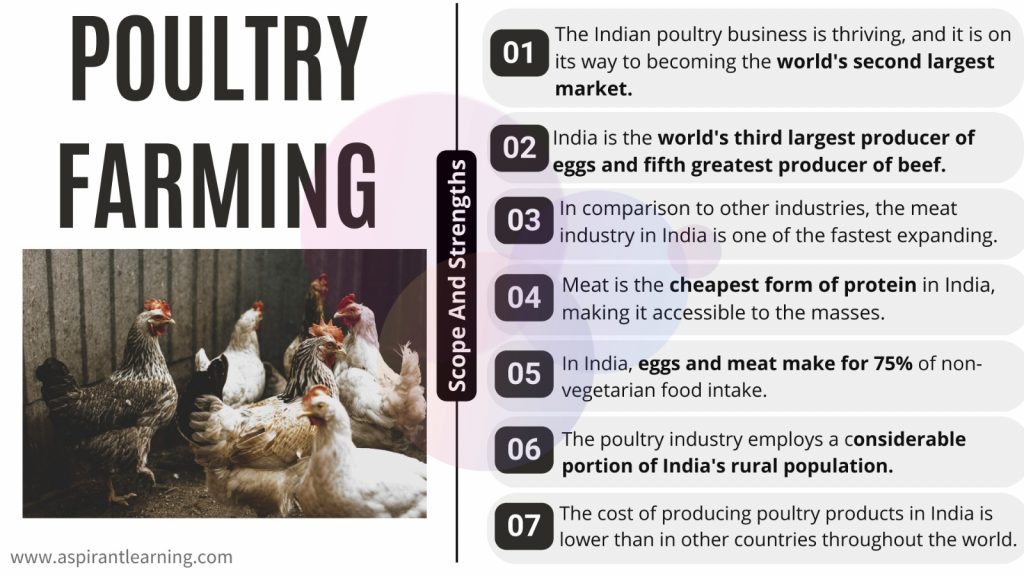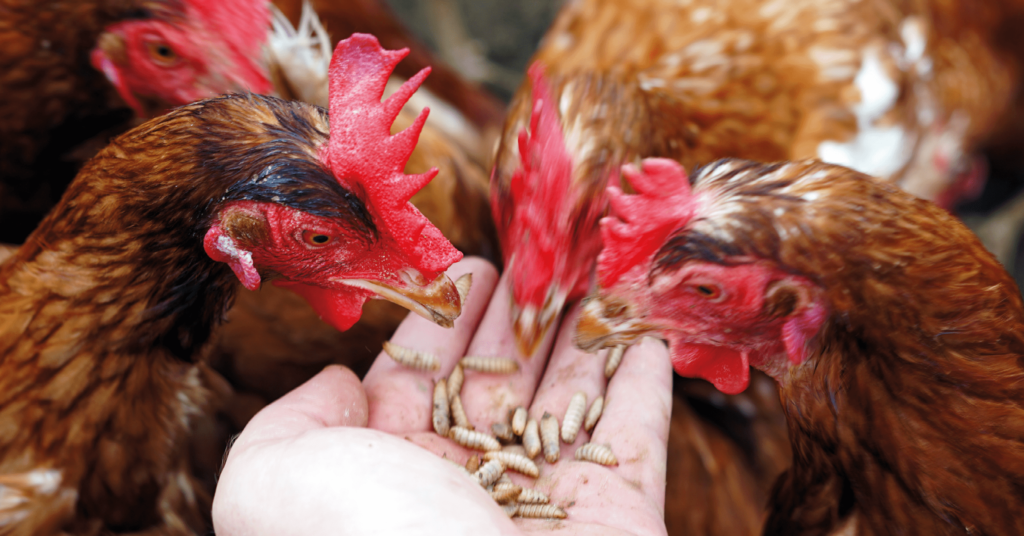News Highlight
Black soldier fly larvae can be a cheap, nutritious alternative to cereal-based poultry feed.
Key Takeaway
- India is one of the world’s top five producers of chicken and eggs.
- The quality, quantity, and feed cost all influence the sector’s sustainability and the economic viability of small chicken farmers.
Black Soldier Fly
- About
- The black soldier fly is a species of fly (Diptera) from the Stratiomyidae family that may be found worldwide.
- They have a bland, white tint to them.
- They eat organic stuff ranging from rejected food waste to manure.
- They also have a high efficiency in waste-to-biomass conversion.
- In contrast to warm-blooded mammals and birds, who expend a lot of energy to stay warm, insects are efficient converters of food into body mass.
- Advantages
- They can be a low-cost, low-footprint, environmentally beneficial, and natural feed companion for chicken growers.
- The larvae can transform organic waste into various essential vitamins and minerals.
- As a result, they are high in calcium, phosphorus, magnesium, sodium, potassium, iron, zinc, copper, manganese, and other minerals, making them an appealing alternative for livestock feed.
Poultry farming
- About
- Fowl farming produces poultry for meat or eggs, such as chickens, turkeys, ducks, and geese, as a subgenre of animal husbandry.
- Poultry is one of India’s most important and fastest-growing agricultural sectors today.
- The poultry industry primarily meets protein and nutrition requirements.
- It needs little cash and delivers minor income and job opportunities to many rural residents in the shortest time.
- Factory farming practices are used to raise the vast majority of poultry.
- According to the World Watch Institute, this method produces 75% of the world’s poultry meat and 70% of its eggs.
- Domestic birds (both layer and boiler) are kept in a shed by humans for the eggs, meat, and feathers they generate.
Challenges Related to Poultry Feed
- Feeds can account for up to 70% of total chicken production costs.
- Furthermore, standard poultry feed, namely cereals and soya, competes with the dietary demands of a growing human population.
- Aside from rising costs, feed resource availability is a crucial factor in the poultry sector’s sustainability.
- Brewers’ dried grains, a byproduct of the brewing business, are one option.
- Despite being strong in protein and amino acids, it has a high moisture and fibre content.
- In some sections of the country, rice bran is an economically viable alternative to wheat.
- It has similar apparent metabolisable energy to wheat.
- However, studies demonstrate that adding rice bran to the meal reduces the laying performance of the chicks.
- For example, the larvae of the black soldier fly (Hermetia illucens) have high nutritional content and are simple to produce.

Conclusion
- A comparison of the nutritional superiority of black soldier fly larvae vs standard diet yields promising results.
- A black soldier fly larvae may transform organic waste into essential vitamins and minerals.
- As a result, they are high in calcium, phosphorus, magnesium, sodium, potassium, iron, zinc, copper, manganese, and other minerals, making them an appealing alternative for livestock feed.
- Because of the greater amino acid content, the grub is also a rich source of protein.
- On the other hand, the nutritional makeup of the larvae varies depending on the food they consume.
Pic Courtesy: Better Origin
Content Source: Down to Earth



